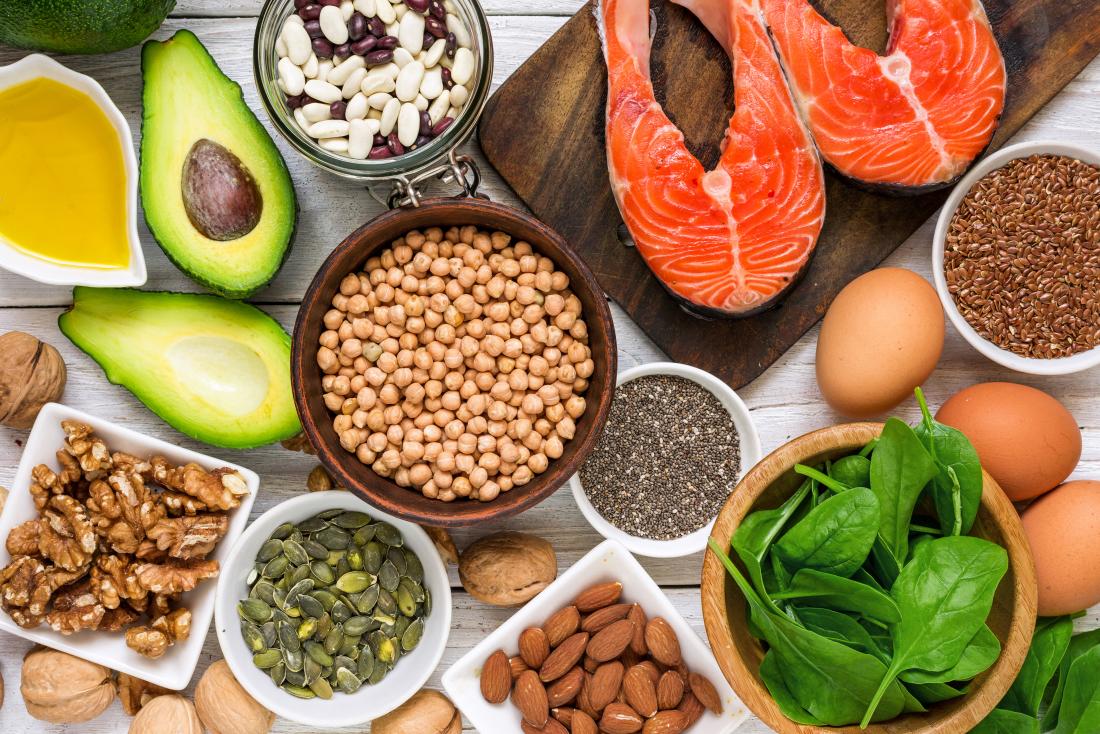Omega-3 fatty acids are essential fats you need to get from your diet.
These incredibly healthy fats have important benefits for the human body and brain.
But most individuals who eat a standard Western diet aren’t eating nearly enough omega-3 fats.
Here is the best beginner’s guide to omega-3 fatty acids.
What are omega-3 fatty acids?
Omega-3, or n-3, fatty acids are a family of polyunsaturated fats you must get from your diet.
They’re termed essential fatty acids, as they’re necessary for health, but the human body cannot produce them since it can other fats.
As polyunsaturated fatty acids, their chemical structure has many double bonds. Omega-6 fatty acids are just another kind of polyunsaturated fat.
The “omega” naming convention must do with the positioning of the double bond in the fatty acid molecule. Omega-3s have the first double bond placed three carbon atoms away from the omega end.
SUMMARY
Omega-3 fatty acids are polyunsaturated fats that your body needs but cannot produce. Because of this, they’re classified as essential fatty acids.
The 3 main types of omega-3 fats
You will find many fatty acids that belong to the omega-3 family. The most important ones are EPA, DHA, and ALA.
EPA (eicosapentaenoic acid)
EPA is a 20-carbon-long omega-3 fatty acid. It is mostly found in fatty fish, seafood, and fish oil.
This fatty acid has many vital functions. Most importantly, it’s used to form signaling molecules known as eicosanoids. These can reduce inflammation.
EPA has been proven to be especially effective against specific mental conditions, especially depression.
DHA (docosahexaenoic acid)
DHA is a 22-carbon-long omega-3 fatty acid. It is largely found in fatty fish, fish, fish oils, and algae.
The main job of DHA is to function as a structural component in cell membranes, particularly in nerve cells in your brain and eyes. It makes up about 40% of polyunsaturated fats in mind.
DHA is very important during pregnancy and breastfeeding. It is absolutely crucial for the development of the nervous system. Breast milk may contain substantial amounts of DHA, depending on the mother’s intake.
ALA (alpha-linolenic acid)
ALA is an 18-carbon-long omega-3 fatty acid. It is the most popular dietary omega-3 fatty acid, found in some specific high-fat plant foods, especially flax seeds, chia seeds, and walnuts.
Besides being used for energy, ALA does not have many biological functions.
Nevertheless, it’s categorized as an essential fatty acid. This is because your body is able to convert it into EPA and DHA, omega-3 fatty acids using different essential, biological functions.
However, this procedure is highly ineffective in humans. According to one estimate, only about 5% of ALA gets converted into EPA and as little as 0.5% into DHA.
For this reason, ALA should never be depended on as your sole omega-3 source. The majority of the ALA you eat will simply be utilized for energy.
SUMMARY
There are three chief kinds of dietary omega-3 fats. EPA and DHA are found in fish and fish, while ALA is largely abundant in high fat plant foods.
Health advantages of omega-3 fatty acids
Omega-3 fatty acids are among the planet’s most solidly researched nutrients.
They have been proven to have strong health benefits on the following conditions:
- Blood triglycerides. Omega-3 supplements can significantly lower blood glucose.
- Cancer. Eating foods high in omega-3 was linked to a reduced risk of prostate, colon, and breast cancer. However, not all studies concur.
- Fatty liver. Accepting omega-3 fatty acid supplements can help get rid of excess fat out of their own liver.
- Depression and anxiety. Taking omega-3 supplements, like fish oil, can help reduce symptoms of depression and stress.
- Pain and burnout. Omega-3s can lessen inflammation and symptoms of various autoimmune diseases, such as rheumatoid arthritis. They’re also good at reducing menstrual cramps.
- ADHD. In children with ADHD, omega-3 supplements can significantly improve various symptoms.
- Asthma. Omega-3s may help prevent asthma in children and young adults.
- Baby development. DHA obtained during childbirth and pregnancy can improve your infant’s intelligence and eye health.
- Dementia. Some studies link higher omega-3 ingestion to a diminished risk of Alzheimer’s disease and dementia.
Despite improving several risk factors for heart disease, omega-3 fatty acids have never been shown to reduce heart attacks or strokes. The largest review studies found no advantage.
SUMMARY
Omega-3 fatty acids are studied thoroughly. They have been demonstrated to resist depression, decrease the quantity of fat in your liver, lower blood triglycerides, and assist in preventing asthma.
How much omega-3 to take for optimum health
Mainstream health organizations such as the World Health Organization (WHO) and the European Food Safety Authority (EFSA) recommend a minimum of 250–500 milligrams combined EPA and DHA every day for healthy adults.
The American Heart Association recommends eating fatty fish at least two times a week to ensure optimum omega-3 intake for heart disease prevention.
For pregnant and breastfeeding women, it is suggested to add an additional 200 mg of DHA on top of the recommended intake.
The National Academies of Sciences, Engineering, and Medicine has also developed ingestion recommendations for ALA. For adults, the recommended intake is 1.6 and 1.1 grams every day for both men and women, respectively.
If you are attempting to enhance a specific health condition, ask your healthcare provider for dose recommendations.
Keep in mind that your omega-6 intake may partly determine how much omega-3 you want. Cutting back on omega-6 can lower your requirement for omega-3.
SUMMARY
It’s generally suggested to consume fatty fish at least twice each week or to take at least 250–500 milligrams of joint EPA and DHA per day from a supplement.
Should you take an omega-3 supplement?
The very best way to ensure optimal omega-3 intake is to eat fatty fish at least twice per week.
But if you don’t eat a lot of fatty fish or fish, you may want to consider taking a supplement.
In reality, nearly all of the studies on the advantages of omega-3 use nutritional supplements.
Great EPA and DHA supplements include fish, krill, and algal oils. For vegetarians and vegans, taking a DHA supplement made from algae is recommended.
When it comes to omega-3 supplements, there are lots of choices and not all of them are good. Some may even contain harmful chemicals because of pollution. Make sure you educate yourself before buying a nutritional supplement.
SUMMARY
Individuals who do not frequently eat fatty fish or seafood should think about taking an omega-3 nutritional supplement. Fish, krill, and algal oils are good options.
Safety and side effects
In regards to nutrition, more isn’t necessarily better.
As with most nutrients, there is a top limit for just how much you should take.
According to the Food and Drug Administration (FDA), carrying around 2,000 milligrams of joint EPA and DHA every day from supplements is safe.
In high doses, omega-3s have blood-thinning effects. Speak to your doctor when you’ve got a bleeding disorder or are taking blood-thinning drugs.
Cod liver oil is also very high in vitamin A, which is harmful in large doses.
Be certain that you read and follow the dosage directions.
SUMMARY
Taking around 2,000 milligrams of omega-3 per day from supplements is secure in accordance with the FDA. Speak with a health care professional if you choose blood-thinning medications or have a bleeding disorder.
Foods full of omega-3 fatty acids
Obtaining omega-3 fats from whole foods is not that hard — if you eat fish.
Here are a few foods that are very full of omega-3:
- Salmon: 4,023 milligrams per serving (EPA and DHA)
- Cod liver oil: 2,664 mg per serving (EPA and DHA)
- Sardines: 2,205 milligrams per serving (EPA and DHA)
- Anchovies: 951 mg per serving (EPA and DHA)
- Flax seeds: 2,338 milligrams per serving (ALA)
- Chia seeds: 4,915 milligrams per serving (ALA)
- Walnuts: 2,542 mg per serving (ALA)
Other foods that are high in EPA and DHA contain most kinds of fatty fish. Meat, eggs, and dairy products from grass-fed or pasture-raised creatures contain adequate amounts too.
Several common plant foods can also be high in the omega-3 fatty acid ALA, including legumes, hemp seeds, and walnuts. Other vegetables, including spinach and Brussels sprouts, include small quantities.
SUMMARY
Foods that are extremely high in EPA and DHA include salmon, cod liver oil, sardines, and anchovies, while those packed with ALA include flax seeds, chia seeds, and walnuts.
Frequently asked questions
Here are fast answers to some frequent questions regarding omega-3 fatty acids and fish oils.
1. What’s the best sort of fish oil?
Omega-3 fatty acids in most fish oils are from the ethyl ester form.
But, omega-3 from the triglyceride and free fatty acid forms appear to be absorbed better.
2. What occurs with excess omega-3s in your system?
They will just be used as a source of carbs, such as other fats.
3. Would you cook using omega-3 oils?
It is not advised to cook using omega-3 oils, as they’re high in polyunsaturated fats, which may easily be damaged in heat.
For this reason, you should store them in a dark, cool place and not buy them in bulk, since they may spoil.
The Most Important Thing
Omega-3 fatty acids are vital to health.
If you do not frequently eat fatty fish or seafood, you need to think about taking an omega-3 supplement.
It’s a very simple but effective approach to improve both your physical and mental wellness. Additionally, it may lower your chance of disease.
You can find omega-3 nutritional supplements, such as vegan varieties, locally or on the internet.


